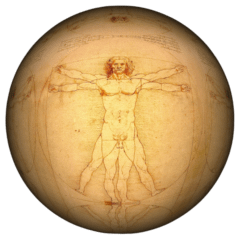Hello everyone,
Thank you for watching. Please leave a comment, like and share if you want. I love you all my subscribers you are the best!
This video is about an enigmatic Neolithic population, the Cucuteni Trypillia culture?
What is Cucuteni Trypillia culture?
It is a Neolithic population that lived in Europe in Romania, Moldavia and Ukraine from 5500 BC to 2750 BC.
Why is Cucuteni Trypillia culture important?
It is important because this culture was very advanced for the time and apparently, they discovered writing, the wheel, the pottery wheel and the plough 2 thousand of years before Sumerians. Centuries if not millennia before the glory of Mesopotamia, Egypt or Greece and Rome this Cucuteni Trypillia Culture achieved unbelievable advancements.
Why is Cucuteni Trypillia culture mysterious?
Their houses were built and arranged in concentric circles. Their establishments were built in a circular way reaching the level of small cities or proto cities. They were burning their houses and establishments every 70-80 years for unknown and mysterious reasons and after that they were rebuilding similar houses. They were probably burning their dead.
The Cucuteni Trypillia culture has created amazing pottery and art using optical art concepts that are considered by scholars to be very advanced. There was a similar culture in China 7000 km away with very similar if not identical art and pottery. This is called Yangshao culture. The mechanism that led to two similar cultures 7000 km away is a mystery. It is unknown if these two separated cultures communicated but transportation during Neolithic times was difficult.
The Cucuteni Trypillia culture population vanished around 2750 BC due to mysterious and unknown reasons. They were probably eliminated by a new and mysterious population called Kurgan Culture which were warriors and invaded their territory.
Little is known about Cucuteni Trypillians. They created optic art with repeating circles or spirals. They seemed to be obsessed by the cycles of life and they were burning their houses every 70-80 years to rebuild them suggesting a belief in cycles of life or even reincarnation. It was an egalitarian population and not too many weapons were discovered on archeological sites thus they were easily absorbed by Kurgan warriors.
Nobody knows the meaning of their painted symbols however they have used the Ying Yang symbols and even swastika symbols. Their art motifs are interesting and used in modern art too. Other symbols used by Cucuteni Trypillia culture are pintadera (barter tokens), the Goddess council set of figurines and bird Goddesses.
Is Cucuteni the oldest civilization?
The Cucuteni Culture (5500-3500 B.C.) is the oldest confirmed European civilization and at the same time one of the world’s oldest civilizations.
What is unique about the Yangshao culture?
Yangshao artisans created fine white, red, and black painted pottery with human facial, animal, and geometric designs. The Yangshao culture did not use pottery wheels in pottery-making. Excavations found that children were buried in painted pottery jars.
Who discovered the Neolithic culture of Yangshao?
A Swedish geologist (and archaeologist) Johan Gunnar Andersson, with the permission of Chinese government, has conducted the first excavation at the site in 1921. As a result he discovered Yangshao culture.
A DNA Genealogy Solution to the Puzzle of Ancient Look-Alike Ceramics across the World was proposed. In other words the similarities in populations and their art is explained through a process of migration, some Neolithic European tribes ended up in China.
Some mysterious mummies were discovered in the Chinese basin of Tarim, dating from 4800 years ago. These mummies had European looking clothes and European features , facts that are suggesting that the two cultures Cucuteni Trypillia and Yangshao did not develop similar features by accident but by a migration population process.
In conclusion, Cucuteni-Trypillia culture and Yangshao culture are interesting and legacy leaving populations from the Neolithic.

